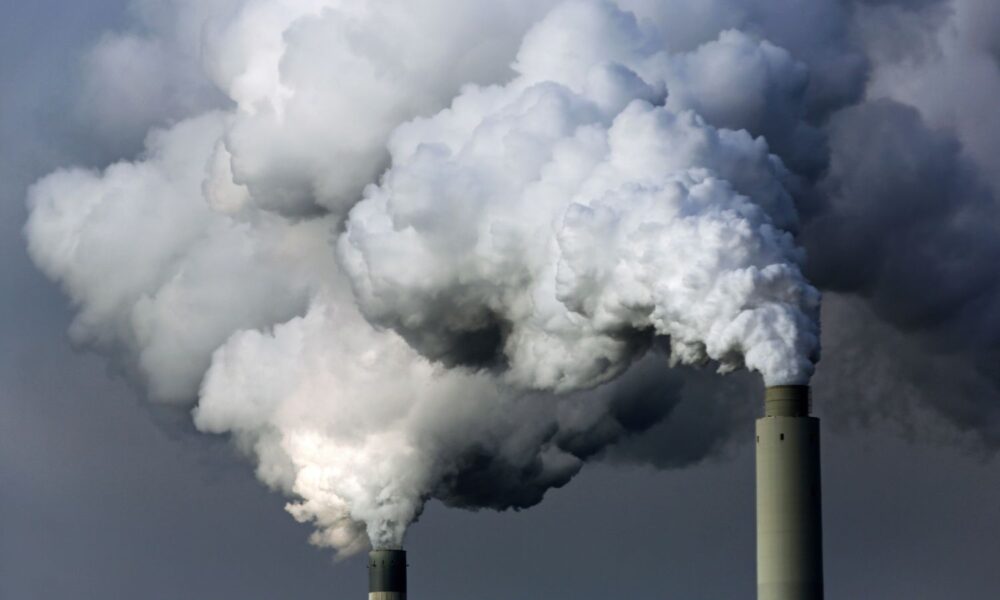Late last month, the Environmental Protection Agency (EPA) asked the public to provide oral comments on a major rule that will determine how much soot pollution you are exposed to. Among the commenters was my colleague Sam Wilson, who passionately and effectively called on the EPA to follow the science and enact the strongest air pollution standards to protect people’s health.
But the oral comments also included several speakers representing the industries producing a substantial amount of this deadly air pollution. Their main arguments include two disturbing tactics that come straight out of the disinformation playbook: casting doubt on the science, and pressing the EPA to violate a law passed by Congress.
The terrifying part is that these disinformation strategies, first honed by the tobacco companies, have a long history of successfully swaying public officials away from science-based decisionmaking and towards industry-favored positions that gravely endanger public health. Therefore, it is useful to examine these tactics more closely to better guard against their detrimental effects.
The science is clear, soot pollution kills people
Soot pollution, known as particulate matter, is a mixture of solid particles and liquid droplets found in the air. One especially dangerous form of this pollutant–and the one that the EPA’s rule has major consequences for–is called fine particulate matter, also known as PM 2.5, that is, particulate matter that measures 2.5 microns or less in width.
PM 2.5 pollution is responsible for millions of deaths worldwide. It is especially linked to harm in the cardiovascular and respiratory systems, but it also has the ability to damage practically every organ in the body. One recent study found that 99 percent of world’s population is exposed to levels that the World Health Organization deems unsafe, with especially high concentrations found in countries in the Global South.
There is a growing body of evidence (see here, here, and here) showing that Black, Indigenous, and people of color (BIPOC) communities are disproportionately exposed to more PM 2.5 pollution than white communities. One study linked the higher PM 2.5 pollution in BIPOC communities with the redlining practices of the 1930s, which continue to disenfranchise communities of color today.
The largest contributors to this deadly type of pollution come from human-made emission sources that burn fossil fuels, such as coal-fired power plants and vehicular emissions of diesel and gasoline. This process is estimated to be responsible for 1 in 5 deaths worldwide. In the United States, of the 100,000 deaths every year associated with human-made sources of PM 2.5 pollution, half of the deaths are attributable to the burning of fossil fuels.
EPA’s PM 2.5 rule is a good step, but more is needed
The Clean Air Act requires the EPA to periodically review the science for six criteria air pollutants, including particulate matter, and to use this science to set a standard known as the National Ambient Air Quality Standards. These science-based standards form the basis of how the federal government protects communities across the United States from harmful PM 2.5 pollution.
My colleague Derrick Jackson has gone into greater detail about this, but the basic gist is that the EPA is currently proposing to tighten the primary annual PM 2.5 standard to between 9 and 10 micrograms per cubic meter and to keep in place the current 24-hour PM 2.5 standard of 35 micrograms per cubic meter. This is both an excellent and a terrible decision. It is excellent to see the EPA wanting to tighten the annual standard (the current standard is 12 micrograms per cubic meter) but it is also terrible that the EPA is not fully committing to the best available science by lowering the annual and 24-hour standard further.
The EPA’s Clean Air Scientific Advisory Committee (CASAC), an independent and highly respected group of scientific experts, weighed in extensively on the EPA’s scientific and policy documents and concluded that even low levels of PM 2.5 pollution can cause harm to human health, and therefore the standards need to be tightened. Specifically, the majority of CASAC members recommended lowering the annual PM 2.5 standard to between 8 and 10 micrograms. Additionally, a majority of CASAC favored lowering the 24-hour standard and “suggested that a range of 25 to 30 micrograms per cubic meter would be adequately protective.”
As I’ve written before, the EPA’s approach to reviewing the science on particulate matter is a robust one. But it also has some inherent weaknesses in how it incorporates the pollutant’s health effects for populations that are more sensitive, such as people with lung disorders, and for populations that are more disproportionately exposed, such as BIPOC communities. Therefore, the EPA would do well to choose the most protective standards possible in order to protect underserved communities.
Fossil fuel industry wants to undermine science-based protections
The EPA’s public hearing on its proposed PM 2.5 rule took place in late February over a three-day period. Of the 281 speakers who presented, 94 percent (263 speakers) urged the EPA to lower the annual PM 2.5 standard to 8 micrograms and lower the 24-hour standard to 25 micrograms.
Of the 6 percent of commenters who urged the EPA to retain or weaken the proposed PM 2.5 standards, the vast majority had direct ties to industry. The speakers included representatives from the American Chemistry Council and American Petroleum Institute–industry trade groups infamous for casting doubt on public health and environmental science to benefit their clients’ profit margins. For years, we at UCS have written extensively of the dangerous disinformation practices of the American Chemistry Council and American Petroleum Institute and their ongoing efforts to dismantle public health protections.
As noted above, the speakers arguing for less protective PM 2.5 standards primarily utilized two tactics. Let’s look at them in more detail.
First, they claimed that the science is in doubt. This is frankly ridiculous. Particulate matter pollution is one of the most well-studied types of air pollutants; for decades the evidence in the scientific literature has overwhelmingly shown how deadly PM 2.5 pollution is, even at low levels of concentration. The EPA’s supplement to the integrated science assessment on particulate matter runs to more than 300 pages that painstakingly review the scientific literature and conclude that, even at low levels of exposure, the relationship between PM 2.5 concentrations and cardiovascular effects and mortality is “causal.” This is the highest level of scientific certainty possible for this process and shows that the weight of scientific evidence is simply undeniable.
Second, industry representatives argued that economic considerations should be taken into account when setting PM 2.5 standards. This argument is utter hogwash because it stands in direct violation of the Clean Air Act. Standards for outdoor particulate matter are governed by section 109 of the Clean Air Act which clearly states that the standard must be based on criteria that “are requisite to protect the public health.”
This part of the law, requiring the government to consider only science-based evidence that can protect public health, has been upheld for years. As a congressional research service report from 2017 put it: “For 45 years, EPA has interpreted Section 109 as prohibiting the [EPA] Administrator from considering costs in setting the standards. In 2001, this interpretation was affirmed in a unanimous Supreme Court decision, Whitman v. American Trucking Associations. The Court pointed to numerous other CAA [Clean Air Act] sections where Congress had explicitly allowed consideration of economic factors, concluding that if Congress had intended to allow such factors in the setting of a primary National Ambient Air Quality Standards, it would have been more forthright—particularly given the centrality of the NAAQS concept to the CAA’s regulatory scheme. The court concluded that Section 109(b)(1) ‘unambiguously bars cost considerations from the NAAQS-setting process.’”
The EPA needs to pass the most health-protective measure possible
During the public hearing, industry representatives asked the EPA to set less protective PM 2.5 standards. This position ignores the best available science and lets thousands of people die every year so that industries can continue their practices of burning fossil fuels and polluting the air.
Fossil fuel companies are well aware of how harmful the air pollution generated by their activities can be for human health. For instance, reporters from the Guardian examined documents showing that the oil industry knew for at least 50 years that the PM 2.5 pollution associated with the burning of fossil fuels could harm human health. Just as fossil fuel industries have cast doubt on the science of climate change for decades, they are now using similar disinformation tactics to undermine the policy process protecting people from dangerous PM 2.5 pollution.
According to the EPA’s own analysis, if we tighten the annual PM 2.5 standard to 8 micrograms per cubic meter, we will save the lives of between 6,600 and 12,000 people every year. If the EPA is serious about following the best available science and protecting the health and safety of communities across the country, this is what it must do: lower its annual PM 2.5 standard to 8 micrograms per cubic meter and its 24-hour standard to 25 micrograms per cubic meter.

